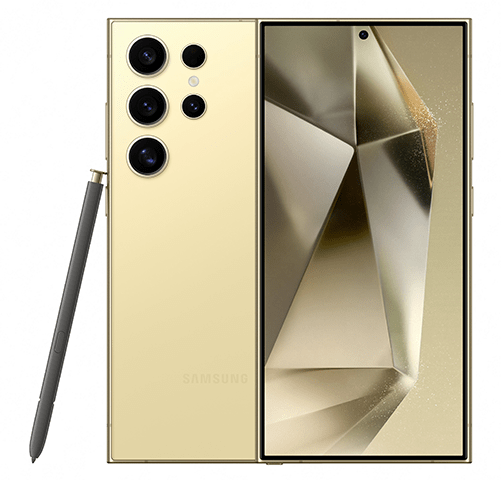It goes without saying that the sheer size of Australia makes finding mobile reception outside of the coastal fringes can be hit and miss. If you’re away from a city or large regional town you may find it’s difficult to get reception on your mobile phone at the best of times, let alone reliable reception.
Luckily, Telstra has stepped up to the plate and physically tests out a range of mobile phones to see whether they are suitable for use out in the bush. Compare the range of ‘Telstra Blue Tick’ phones below and find out what you need to do to get the most out of your phone.
On this page:
Prepaid offers you might like
The following table shows a selection of sponsored SIM Only plans on Canstar Blue’s database with links to referral partners.
 |
1 Month Contract (1 month min. cost $20) SIM Only Prepaid
|
Unlimited
GB |
$16.00 Cost/month |
Go to site |
What is ‘Telstra Tick’?
The Telstra’s ‘Tick’ program denotes a series of tests Australia’s largest telco undertakes on various phones and classifies them as A, B or C Class coverage. ‘C Class’ phones are the ‘Blue Tick’ models and have been certified by Telstra as being best mobile phone for poor reception areas in Australia.
Up until 2017, phones rated with the Blue Tick were 3G only, largely owing to Telstra’s larger-spanning 3G network. In April 2017 that all changed when the first 4G Blue Tick phone came out – the Samsung Galaxy S8 series. With the Blue Tick certification, the Galaxy S8 series comes recommended by Telstra for use out in the bush. of course, Samsung’s phone releases post the S8 series, are also Telstra Blue Tick phones, including devices in the 5G-capable Samsung Galaxy S and A series.
How does Telstra test its Blue Tick phones?
Telstra’s Blue Tick phones are tested based on receiver sensitivity. One component includes physical testing where a technician literally holds the phone in five different ways in order to gauge the transmission strength of the phone’s antennas.
Signal strength is measured as ‘dBm’, which stands for decibel-milliwatts, and even one extra dBm can result in about 2km extra coverage when you’re on the fringes of reception areas. All tests are taken out by the same technician in a controlled lab as hand size can affect signal, given that phones do not come with big bulky antennas anymore.
If you’re on the fringes of coverage, a Telstra Blue Tick phone may be able to provide better signal strength than other phones. Of course, the telco also recommends a Telstra phone plan, which is oftentimes the only carrier to get reception in regional and remote areas.
Telstra Blue Tick phones

Perhaps the biggest bonus to the Telstra Tick certification is that some of the most popular smartphones are on the list – you don’t have to purchase some obscure or inferior smartphone in the name of getting reception. Some of these devices are only available on a plan, while others are available to purchase outright from Telstra. The current list of available devices includes:
- Samsung Galaxy S24 series
- Samsung Galaxy S23 series
- Samsung Galaxy S22 series
- Samsung Galaxy S21 series
- Samsung Galaxy S20 series
- Samsung Galaxy A15 5G
- Samsung Galaxy A54 5G, A34 5G
- Samsung Galaxy A73 5G, A53 5G, A33 5G, A13 5G
- Samsung Galaxy XCover Pro
- Samsung Galaxy XCover6 Pro
- Telstra Tough Max 3
As you can see, some popular smartphones are on the list, so you don’t have to go out of your way to get better reception. Below you’ll find Telstra’s postpaid plans; they have 4GX capability, but you’ll need to have a 4GX-compatible phone and be in a 4GX area to get the best speeds. These plans are also capable of 5G connections, but you’ll need to be in range of Telstra’s 5G signal.
If you’re interested in a phone plan with a ‘Blue Tick’ phone, such as the Samsung Galaxy S24 series, you’ll be able to select any of Telstra’s postpaid plans to bundle with your device. The following table shows all published Telstra postpaid plans on Canstar Blue’s database, listed in order of cost, from the lowest to highest. Use our phone plan comparison tool to see plans from a range of other providers. This is a selection of products with links to a referral partner.
What is the best Blue Tick phone?
Choosing the best Blue Tick phone will largely depend on what your needs are in a phone. If you’re after a simple and more affordable phone, you might be happy with one of Samsung’s Galaxy A series phones. However, if you’re after a premium smartphone experience with great cameras, you might prefer to look into the Samsung Galaxy S series.
The Galaxy S24 series includes a range of premium smartphones with all the bells and whistles you can expect from Samsung’s best-of-the-best smartphone range. The Samsung Galaxy S24 Ultra offers a great smartphone experience, but with a big price tag to match. Ultimately, you need to find the right balance between price and features to determine which is the best Blue Tick phone for you.
Compare Samsung Galaxy S24 plans
Samsung Galaxy S24 plans
The following table shows selected published 24-month plans for the 256GB Samsung Galaxy S24 on Canstar Blue’s database, listed in order of standard monthly cost, from the lowest to highest and then by data allowance, largest to smallest. Use our tool for mobile phone plan comparison to see a wider range of plans from other providers. This is a selection of products with links to a referral partner.
Samsung Galaxy S24+ plans
The following table shows selected published 24-month plans for the 256GB Samsung Galaxy S24+ on Canstar Blue’s database, listed in order of standard monthly cost, from the lowest to highest and then by data allowance, largest to smallest. Use our tool for mobile phone plan comparison to see a wider range of plans from other providers. This is a selection of products with links to a referral partner.
Samsung Galaxy S24 Ultra plans
The following table shows selected published 24-month plans for the 256GB Samsung Galaxy S24 Ultra on Canstar Blue’s database, listed in order of standard monthly cost, from the lowest to highest and then by data allowance, largest to smallest. Use our tool for mobile phone plan comparison to see a wider range of plans from other providers. This is a selection of products with links to a referral partner.
What do I do if my phone is not on the list?
Don’t panic! Just because your phone is not on the Telstra list, doesn’t mean that it’s inadequate for rural coverage. The Telstra Blue Tick can provide peace of mind and help with the decision on which device to choose next, especially if you live in an area with temperamental reception. You don’t need the latest and greatest phones – the phones on the list are simply certified as ideal for regional Australia. Your phone will likely still work!
It’s also important to remember that testing can take a while, so if your phone is hot off the press, don’t expect to see Blue Tick certification straight away.
Telstra Blue Tick: Is it worth it?
Telstra’s Blue Tick program comes at no direct cost to the consumer and provides peace of mind, much like a Heart Foundation Tick on a box of cereal. Perhaps the biggest proponent of the certification is the fact that many popular smartphones are available with the tick, which is good to know if you’ve been eyeing off the latest Samsung devices.
That said, is it worth switching your phone to a Telstra Blue Tick-certified one? If you’re living in or travelling to remote areas, it could mean the difference between a bar of signal and nothing. Considering Australia is a vast land with most of it being inhospitable, it could work as a lifeline in some situations. If you feel you really do need a device for regional travel, buying a cheap Telstra Blu Tick phone with a Telstra prepaid plan could be a great solution when in remote areas and keeping your current smartphone for regular duties.
The Telstra Blue Tick program is unique to Australia, and Australia’s largest telco carrying out the tests can provide peace of mind. While it’s hardly worth buying a new phone unless you’re travelling to a remote area, a Telstra Blue Tick phone could provide the difference between no signal at all and making a call when you need it.



Share this article